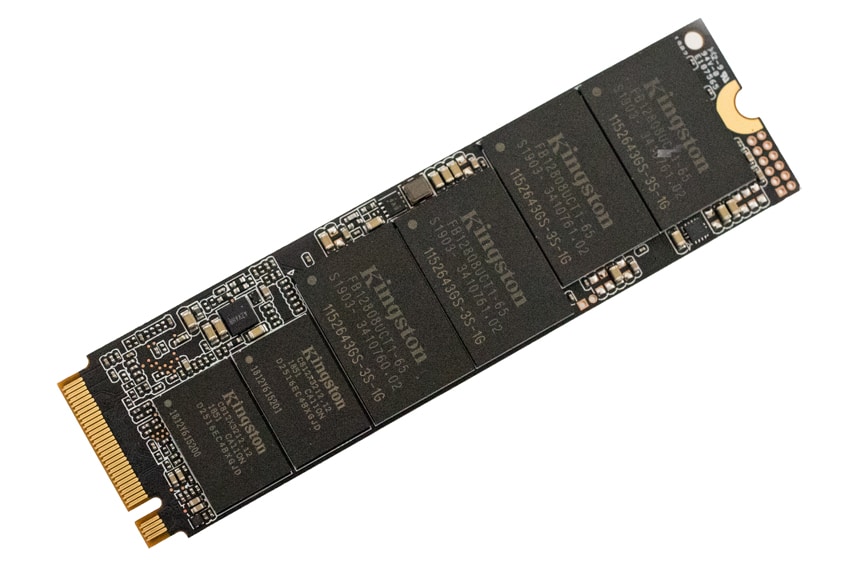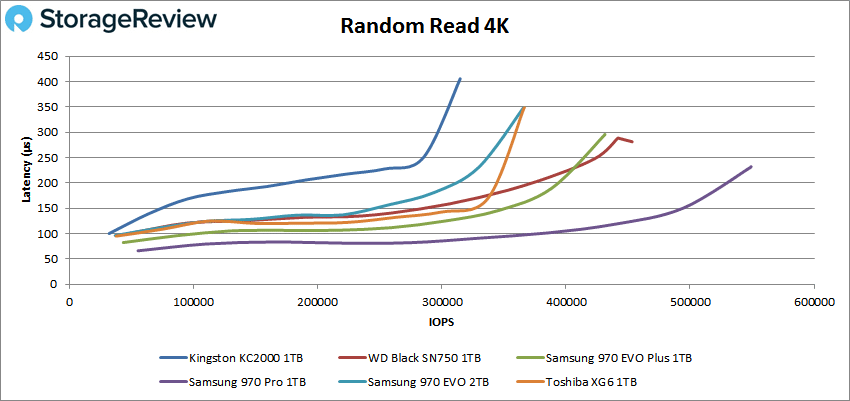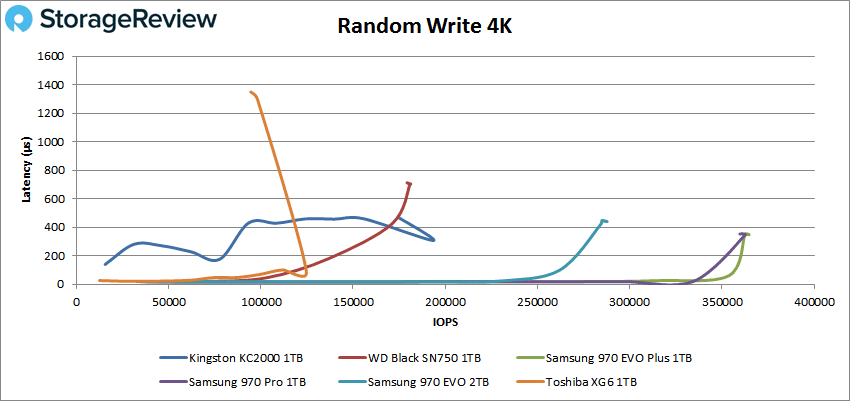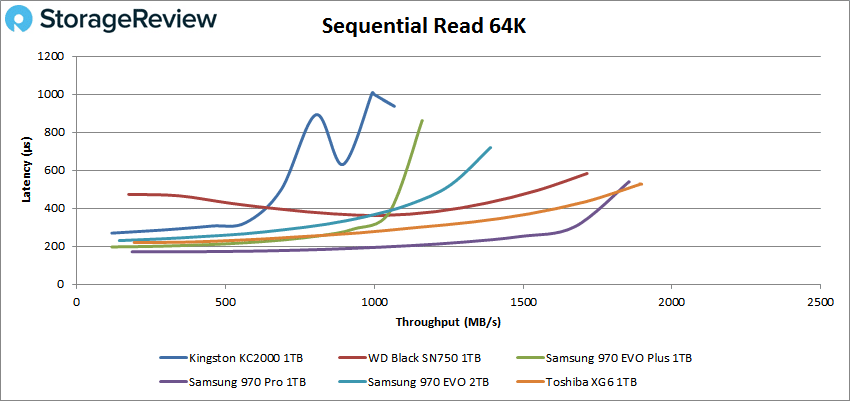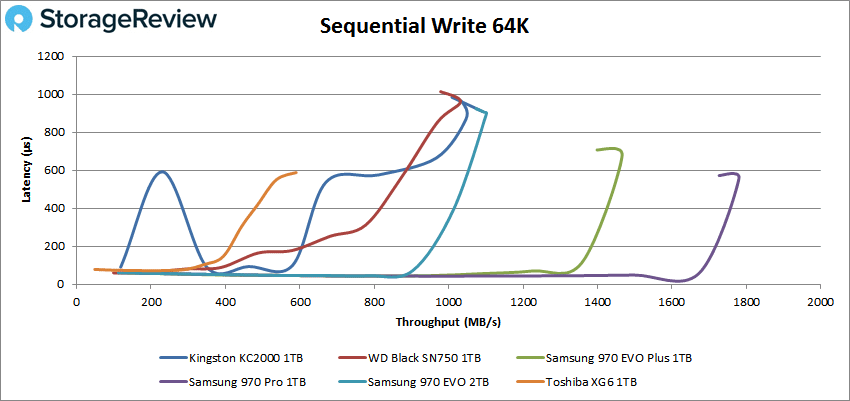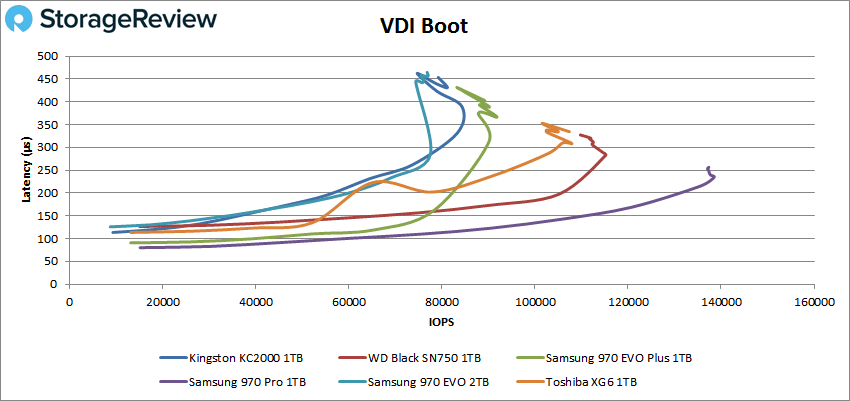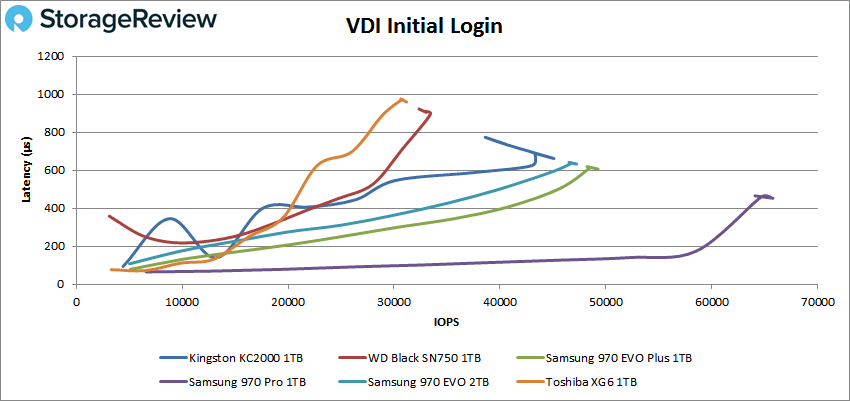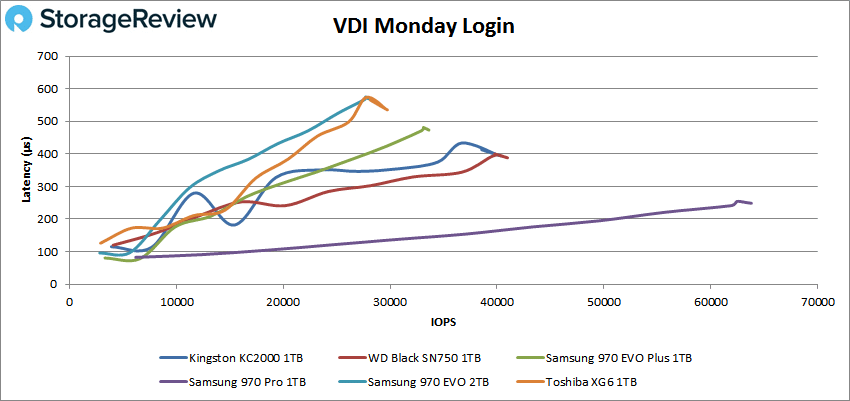
The Kingston KC2000 SSD is the company’s next generation M.2 NVMe drive that is geared toward power users. The drive leverages 96-layer, 3D TLC NAND and the latest Gen 3.0 x 4 controller to deliver quoted speeds of 3.2GB/s read and 2.2GB/s write. With the drive’s performance and endurance, Kingston states it would be a good fit for desktops, workstation, and high-performance computing systems.
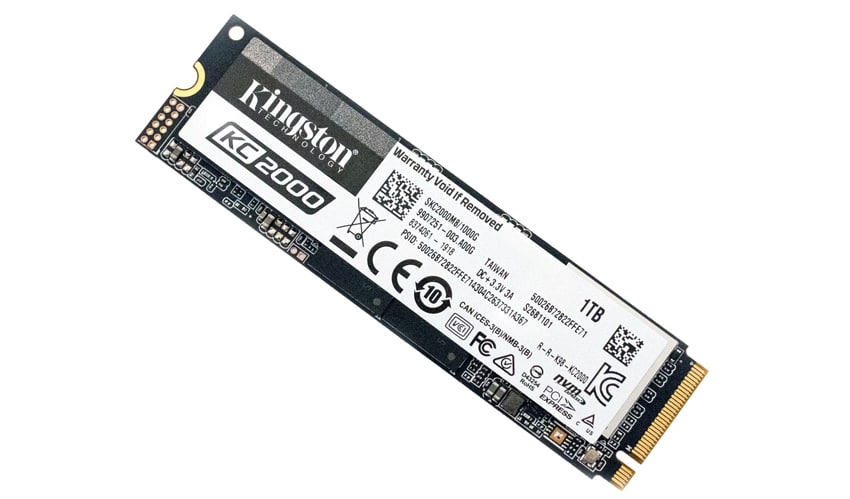
The KC2000 comes in a range of capacities from 250GB to 2TB. From a security perspective, the drive is self-encrypting and also supports end-to-end data protection through 256-bit AES hardware-based encryption. This encryption allows for the use of software vendors with TCG Opal 2.0 security management solutions such as Symantec, McAfee, WinMagic, as well as others. The drive comes with built-in Microsoft eDrive support for security for the use of BitLocker.
The Kingston KC2000 SSD can be picked up for as little as about $60 for the 250GB model. For this review we will be looking at the 1TB model.
Kingston KC2000 NVMe PCIe SSD Specifications
| Form factor | M.2 2280 |
| Interface | NVMe PCIe Gen 3.0 x 4 Lanes |
| Capacities | 250GB, 500GB, 1TB, 2TB |
| Controller | SMI 2262EN |
| NAND | 96-layer 3D TLC |
| Encrypted | AES 256-bit Encryption |
| Performance | |
| Sequential Read/Write | 250GB – up to 3,000/1,100MB/s 500GB – up to 3,000/2,000MB/s 1TB – up to 3,200/2,200MB/s 2TB – up to 3,200/2,200MB/s |
| Random 4K Read/Write | 250GB – up to 350,000/200,000 IOPS 500GB – up to 350,000/250,000 IOPS 1TB – up to 350,000/275,000 IOPS 2TB – up to 250,000/250,000 IOPS |
| Total Bytes Written (TBW) | 250GB – 150TBW 500GB – 300TBW 1TB – 600TBW 2TB – 1.2PBW |
| Power Consumption | .003W Idle / .2W Avg / 2.1W (MAX) Read / 7W (MAX) Write |
| Storage Temperature | -40°C~85°C |
| Operating temperature | 0°C~70°C |
| Dimensions | 80mm x 22mm x 3.5mm |
| Weight | 250GB – 8g 500GB – 10g 1TB – 10g 2TB – 11g |
| Vibration Operating | 2.17G Peak (7-800Hz) |
| Vibration Non-operating | 20G Peak (20-1000Hz) |
| MTBF | 2,000,000 |
| Warranty | Limited 5-year warranty with free technical support |
Kingston KC2000 NVMe PCIe SSD Performance
Testbed
The test platform leveraged in these tests is a Dell PowerEdge R740xd server. We measure SATA performance through a Dell H730P RAID card inside this server, although we set the card in HBA mode only to disable the impact of RAID card cache. NVMe is tested natively through an M.2 to PCIe adapter card. The methodology used better reflects end-user workflow with the consistency, scalability and flexibility testing within virtualized server offers. A large focus is put on drive latency across the entire load range of the drive, not just at the smallest QD1 (Queue-Depth 1) levels. We do this because many of the common consumer benchmarks don’t adequately capture end-user workload profiles.
Houdini by SideFX
The Houdini test is specifically designed to evaluate storage performance as it relates to CGI rendering. The test bed for this application is a variant of the core Dell PowerEdge R740xd server type we use in the lab with dual Intel 6130 CPUs and 64GB DRAM. In this case we installed Ubuntu Desktop (ubuntu-16.04.3-desktop-amd64) running bare metal. Output of the benchmark is measured in seconds to complete, with fewer being better.
The Maelstrom demo represents a section of the rendering pipeline that highlights the performance capabilities of storage by demonstrating its ability to effectively use the swap file as a form of extended memory. The test does not write out the result data or process the points in order to isolate the wall-time effect of the latency impact to the underlying storage component. The test itself is composed of five phases, three of which we run as part of the benchmark, which are as follows:
Loads packed points from disk. This is the time to read from disk. This is single threaded, which may limit overall throughput.
Unpacks the points into a single flat array in order to allow them to be processed. If the points do not have dependency on other points, the working set could be adjusted to stay in-core. This step is multi-threaded.
(Not Run) Process the points.
Repacks them into bucketed blocks suitable for storing back to disk. This step is multi-threaded.
(Not Run) Write the bucketed blocks back out to disk.
Looking at the performance of rendering time (where less is better), the Kingston KC2000 did fairly well coming in third of the non-Optane drives with 2,595.3 seconds.
VDBench Workload Analysis
In our first VDBench Workload Analysis, we looked at random 4K read performance. Here, the KC2000 started in the back of the pack and stayed there with the highest latency and lowest performance. The drive peaked at 314,768 IOPS with a latency of 405.5μs.
With 4K random write the KC2000 fared better coming in fourth in terms of I/O performance of 193,475 IOPS, but stayed at a higher overall latency.
Switching over to sequential workloads in our 64K benchmarks, the KC2000 once again had the lowest peak performance (though it started off second to last) with 17,076 IOPS or 1.07GB/s with a latency of 937.1μs.
Once again the KC2000 performed better with writes, in the 64K sequential writes the drive came in fourth with 17,470 IOPS or 1.09GB/s with a latency of 908.9μs.
Next, we looked at our VDI benchmarks, which are designed to tax the drives even further. These tests include Boot, Initial Login, and Monday Login. Looking at the Boot test, the KC2000 was second to last with a peak performance of about 85K IOPS and a latency of 390μs before dropping off some.
For VDI Initial Login, the KC2000 came in fourth with a peak performance of 45,055 IOPS with a latency of 662.6μs.
Our last of this series of tests is our VDI Monday Login test. Here, the KC2000 came in third with a peak performance of 39,400 IOPS and a latency of 397.7μs.
Conclusion
Kingston has released the next generation of its M.2 NVMe SDD with the KC2000. The drive leverages 96-layer, 3D TLC NAND and the SMI 2262EN controller to deliver performance needed by power users. The drive comes with a 5-year warranty and in several capacities including 250GB, 500GB, 1TB, and 2TB. The drive comes with a variety of security features including self-encryption and 256-bit AES hardware encryption. The drive is aimed at desktops, workstations, and HPC users and starts at $60 for the 250GB model.
From a performance perspective the drive was middle of the road to lower end with a weakness being low-latency performance. In our Houdini test the KC2000 really shined, coming in third after the Optane SSDs. The drive’s VDBench performance was a bit more mixed. Highlights include 315K IOPS in 4K read, 193K IOPS in 4K write, 1.07GB/s read in 64K, 1.09GB/s write in 64K, 85K IOPS for VDI Boot, 45K IOPS in VDI Initial Login, and 39K IOPS in VDI Monday Login. While total bandwidth or I/O speed ranked average, it had an overall higher starting latency than many of the drives we compared it to.
For those looking for a cost effective NVMe SSD, the Kingston KC2000 would make a fine choice. Its not the strongest performer in this category, but the lineup is also dominated by some incredibly strong options that can be considerably more expensive. The KC2000 will be more of a cost-play for most buyers, where performance expectations are in line with the user’s needs.
Sign up for the StorageReview newsletter

